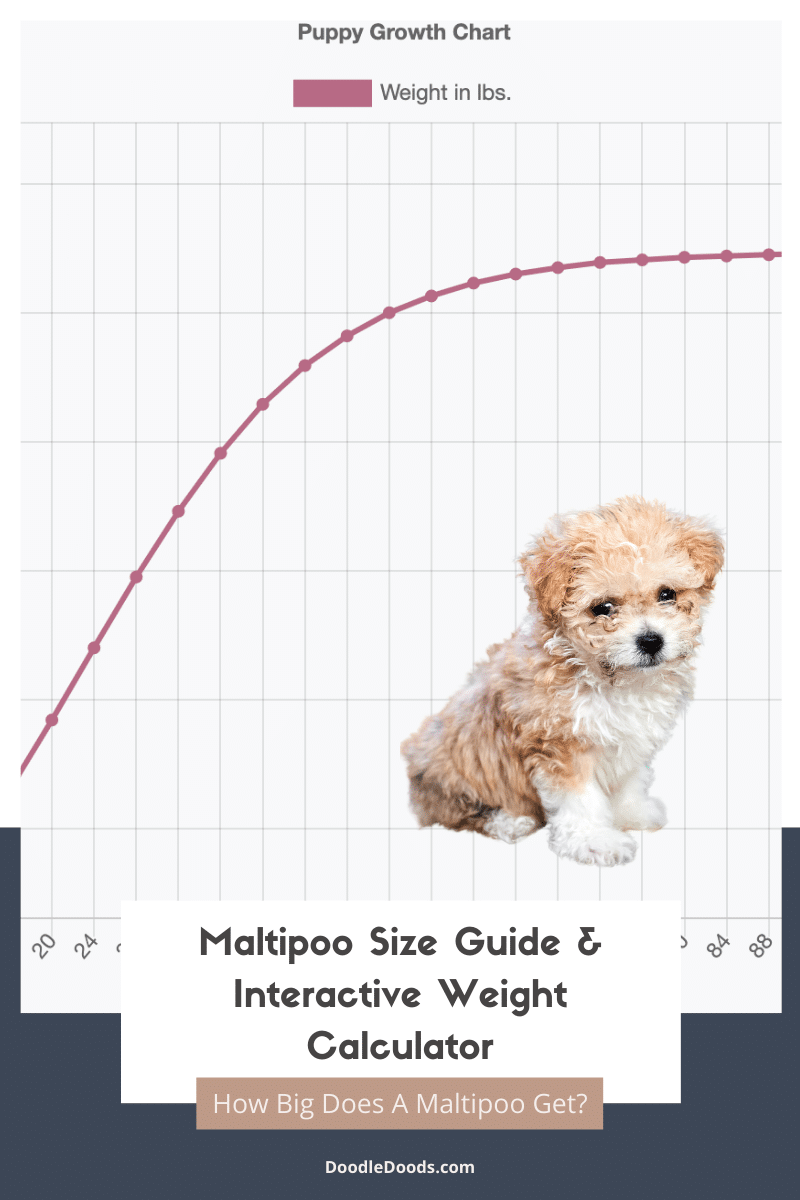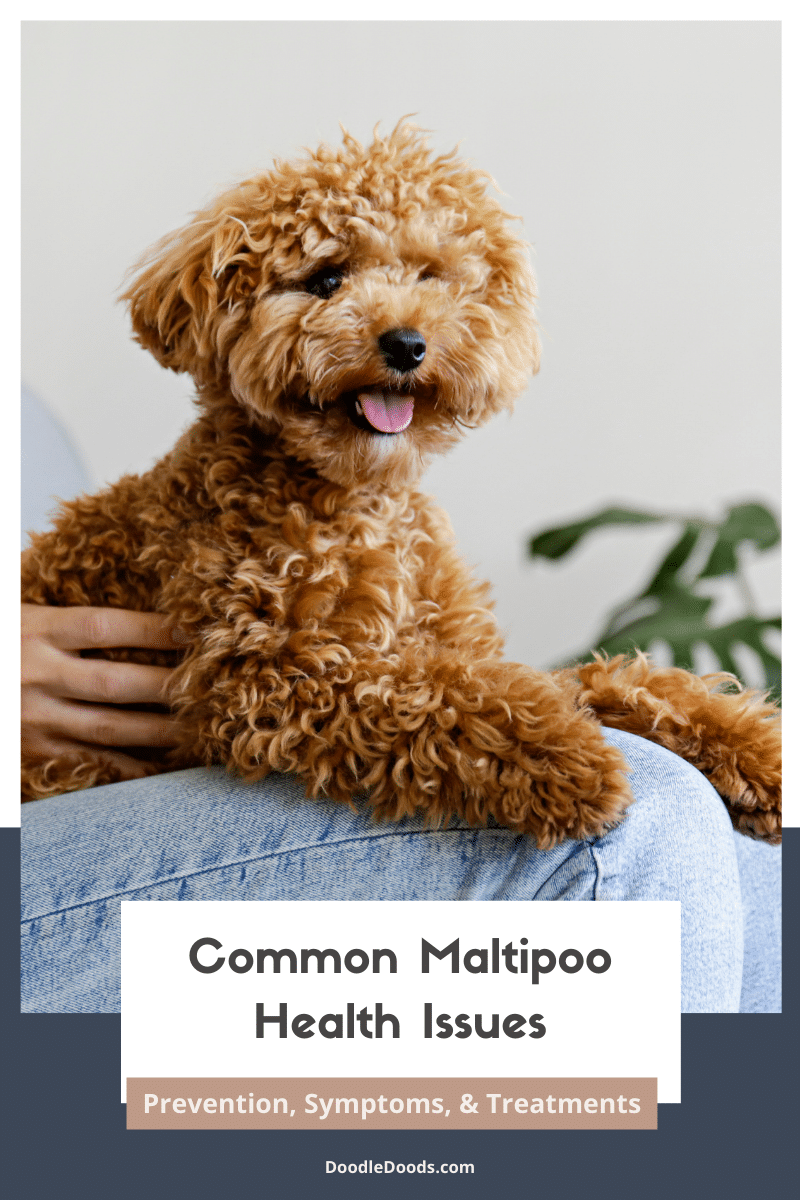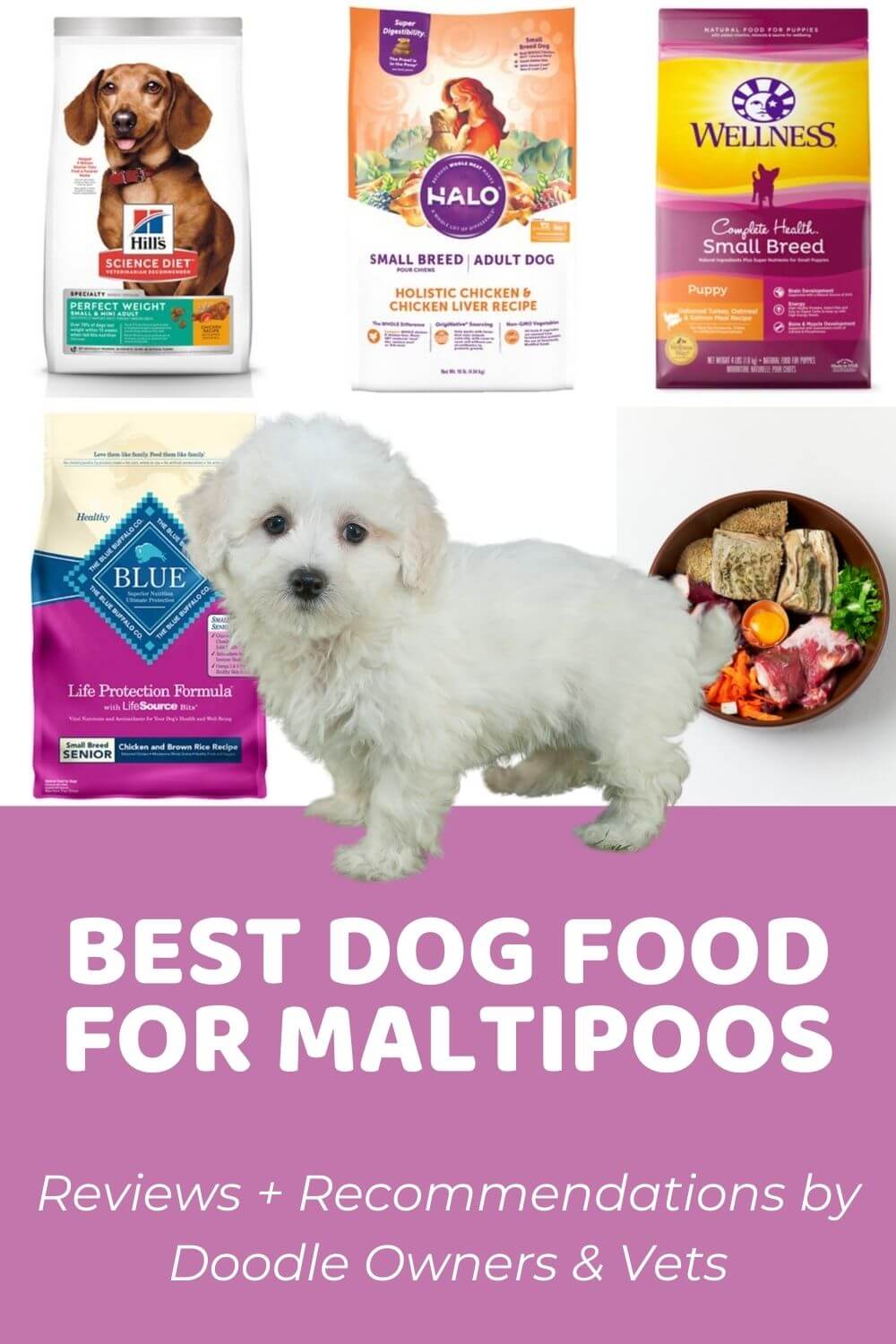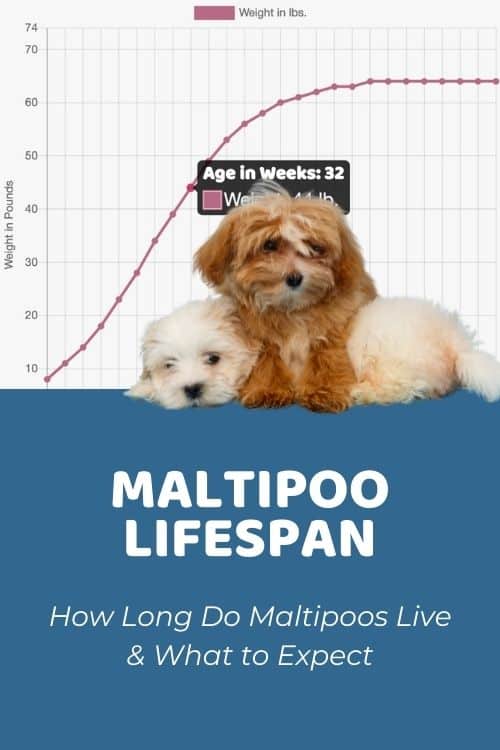How big do Maltipoos get? When are they fully grown? How big does a teacup Maltipoo get? In this Maltipoo size guide, you’ll learn everything about Maltipoo’s size and weight. Psst…There’s also an interactive Maltipoo size chart and growth calculator. Let’s dig in!
Table of Contents
- Maltipoo Size Predictions
- Toy And Mini Maltipoo Size Charts & Growth Patterns
- Maltipoo Size Frequently Asked Questions
- Maltipoo Size Final Thoughts
Maltipoo Size Predictions
The Maltipoo’s full-grown size ranges between 5 and 25 pounds, and they can stand anywhere between 6 and 14 inches tall from the withers, the highest part of a dog’s shoulder blades. We know, it’s a rather broad estimate…
As with any other purebred dog or crossbreed, we can predict a Maltipoo’s full-grown size based on their parents’ size, their generation, and also gender. As the Maltipoo is a hybrid cross between the Poodle and Maltese, we do have some variability here to consider. Namely, because the Poodle comes in three different sizes – Standard, Miniature, and Toy. The largest of them are Standard Poodles, whereas the smallest are Toy Poodles.
Since the purebred Maltese is such a small purebred dog, especially considering that they’re categorized as a toy breed, Maltipoos are produced with either Miniature or Toy Poodles. So, knowing that, there are no Standard Maltipoos.
With hybrid breeds, it can be difficult to predict the exact outcome, as we are combining very different traits. But by understanding the Maltipoo’s heritage, we can gain a better understanding of their potential traits, including their size.
The purebred Maltese weighs just about 3.5 to 7 pounds as an adult, with an average height of 7 to 9 inches. Meanwhile, Miniature Poodles weigh between 10 and 20 pounds, and stand about 10 to 15 inches tall. The smaller variation, the Toy Poodle, only weighs between 4 and 12 pounds, standing up to 10 inches tall at the shoulder.
Let’s now have a closer look at the Toy Maltipoo and Mini Maltipoo’s full-grown size, their growth patterns, and how their generation can play a role.
Toy And Mini Maltipoo Size Charts & Growth Patterns
As Maltipoos are small breed dogs, they usually reach their full size before they turn one year old. A general rule of thumb is that the smaller the dog, the sooner they’ll be fully grown.
The typical growth pattern of any puppy shows rapid growth in the first half of their puppyhood. Once they’ve reached half their size, growth will slow down a bit, and plateau in the last few months before they’re fully grown. By then, puppies have usually achieved their full height, but will continue to gain some girth.
We recommend you give our Maltipoo size chart and growth calculator a try! Enter your pup’s estimated size, weight, age in weeks, and breed. Our calculator will predict your Maltipoo’s adult size and when they’ll reach it.
So how big is a Maltipoo’s full-grown size? Here’s a useful guideline:
| Toy Maltipoo | Mini Maltipoo | |
| Weight | 5-15 pounds | 15-25 pounds |
| Height* | 6-11 inches | 11-14 inches |
| Age at Full-Grown | 7.5-11 months | 11-13 months |
Speaking of, we’ve been collecting weight data from our Doodle Weight Prediction Calculator. The below Maltipoo size chart / graph shows the average weights by age (in weeks), by size of Maltipoo.
As of October 24, 2022, we’ve received over 11,700 accurate Maltipoo weight submissions through our calculator.
In addition, your Maltipoo pup needs an energy dense and nutritious diet as they grow up. Growing dogs require more nutrients and calories than fully grown dogs. Moreover, as Maltipoos come in toy and mini sizes, we recommend you opt for puppy formulas specially designed for small and toy breeds.
Like all breeds, Doodles are prone to certain types of hereditary diseases. We recommend you check out our overview of the most common Doodle health issues. For instance, Toy and Miniature Poodles are at a risk of developing patellar luxation or legg-calve-perthes disease that are both related to joint health.
Furthermore, it’s important that we highlight how a proper diet is directly connected to your pup’s health and wellbeing. Over or under feeding can have serious effects on your Maltipoo’s health in both short and long term.
Mini Maltipoo Size
Mini Maltipoos weigh between 15 and 25 pounds and stand at 11-14 inches tall. This is the bigger version of a Maltipoo, which some breeders also call Medium Maltipoo.
Usually, Mini Maltipoos reach half their full-grown size at around 3.5-5 months old, and reach their adult size around 11-13 months old.
For a quick estimate, you can use this formula to predict your Mini Maltipoo’s full size by multiplying your pup’s weight at 18 weeks old by two.
Toy Maltipoo Size
Toy Maltipoos are usually around 5-10 pounds and 6-11 inches from the withers. Toy Maltipoos usually reach half their full size at 3.5 months, and their full adult size at 7.5-11 months of age.
Additionally, you might have heard about Teacup Maltipoos, who weigh even less than 5 pounds. It’s important to keep in mind that even though Teacup Maltipoos look adorable, breeding dogs way too small will most likely have negative effects on the dog’s health.
If you want to calculate the estimated size of a Toy Maltipoo once grown up, multiply their weight at 15 weeks old by two.
F1 vs F1b vs F2b Maltipoo Size
We’ve briefly mentioned that your dog’s generations can also factor into their adult size. But how exactly? First, we need to understand what those generations mean and how they have been achieved.
| 1st Parent | 2nd Parent | % Maltese* | % Poodle* | |
| F1 Maltipoo (first-generation) | Maltese | Poodle | 50% | 50% |
| F1B Maltipoo (first-generation backcross) | F1 Maltipoo | Poodle | 25% | 75% |
| F1BB Maltipoo (first-generation backcross backcross) | F1B Maltipoo | Poodle | 12.5% | 87.5% |
| F2 Maltipoo (second-generation) | F1 Maltipoo | F1 Maltipoo | 50% | 50% |
| F2B Maltipoo (second-generation backcross) | F1 Maltipoo | F1B Maltipoo | 37.5% | 62.5% |
| F2B Maltipoo (alternate cross) | F2 Maltipoo | Poodle | 25% | 75% |
| F3 / Multigen Maltipoo | F1B Maltipoo or higher | F1B Maltipoo or higher | Varies | Varies |

Knowing that, we can predict that a Maltipoo’s size will be determined by their genetic makeup. For example, an F1 Maltipoo has a 50-50 chance of inheriting either more Poodle or more Maltese characteristics. In contrast, an F1b Maltipoo that’s been bred back with a Toy Poodle will probably be a smaller dog and look more like a Poodle.
Maltipoo Size Frequently Asked Questions
Usually, Toy or Tiny Maltipoos reach their adult weight and size when they’re 9-11 months old. Miniature and Medium Maltipoos finish growing around 11-13 months of age.
Your Maltipoo adult’s size depends on their genetic makeup, parents, nutrition, and exercise levels. You can use our interactive Maltipoo growth calculator, which is a helpful tool for predicting your puppy’s adult size.
As an alternative, you can use this formula to roughly estimate your Maltipoo’s full size:
Maltipoos are usually considered small dogs. Even though bigger Maltipoos do fall in the medium-sized breed category, they’re still on the lower end of the spectrum thanks to the Maltese dog and Mini or Toy Poodle parents.
Maltipoo Size Final Thoughts
In conclusion, Maltipoos are cute and bubbly small companions that everyone just adores. We hope this article answered all of your questions related to Maltipoo size and weight, and that you will find our Doodle puppy growth calculator a helpful guide when bringing up your furry little family member.
Learn How to Care for Your Doodle Puppy!

Perfect for first-time Doodle parents, get ALL your questions answered, including questions new Doodle parents don’t even think to ask.
Plus, get $700 worth of Bonus Materials for FREE, including:- Doodle Parenthood Community and Support Group ($190 value)
- Doodle Puppy Growth Tracker ($20 value)
- EMERGENCY Cheatsheet: When To Call The Vet Immediately ($50 value)
- HELP! Button ($145 value)
- And SO MUCH MORE!
The information on this page is for informational purposes only. It is not intended to be a substitute for qualified professional veterinary advice, diagnosis, or treatment. Always seek the advice of your veterinarian or other qualified animal health provider with any questions you may have.




